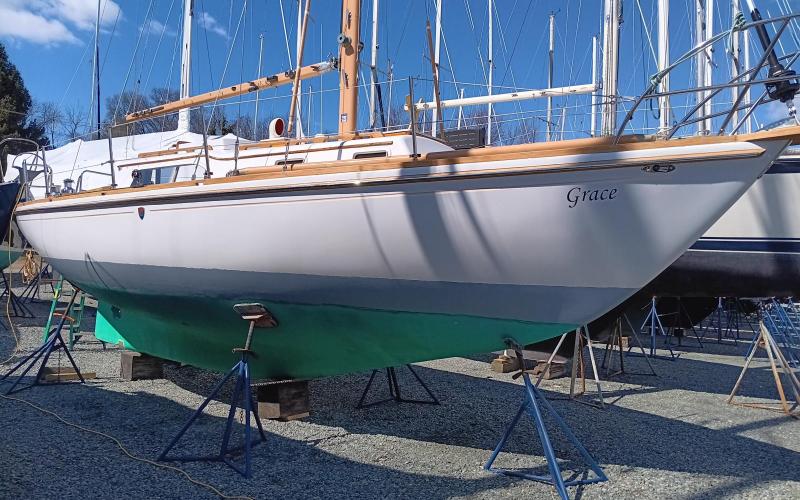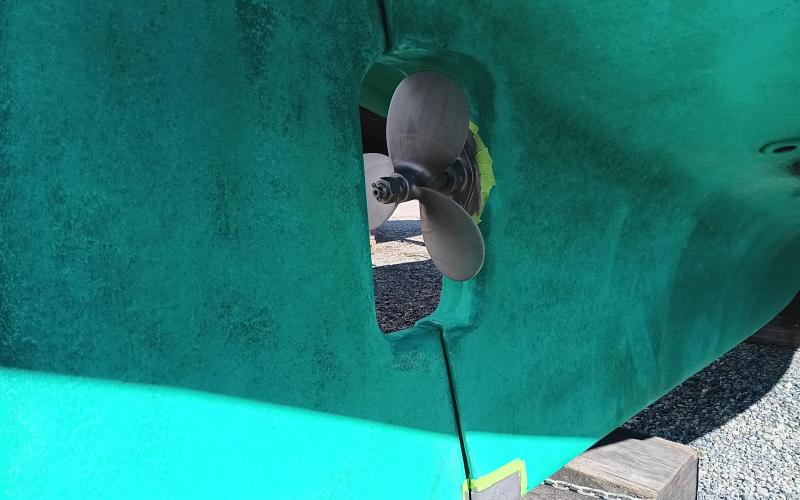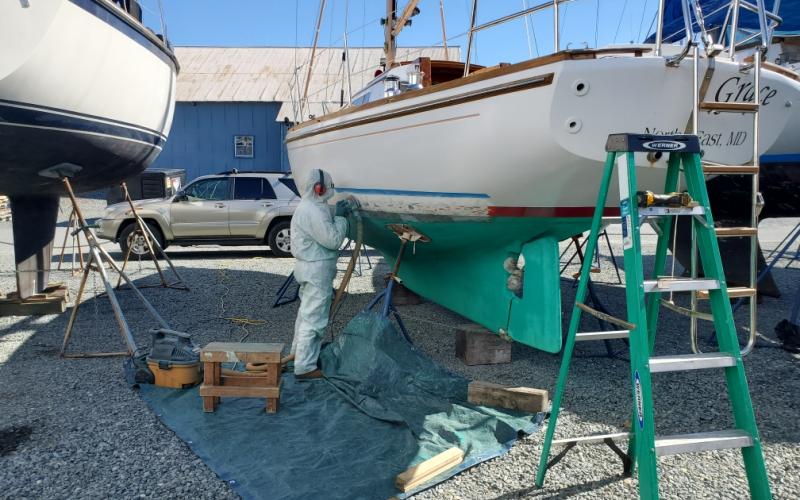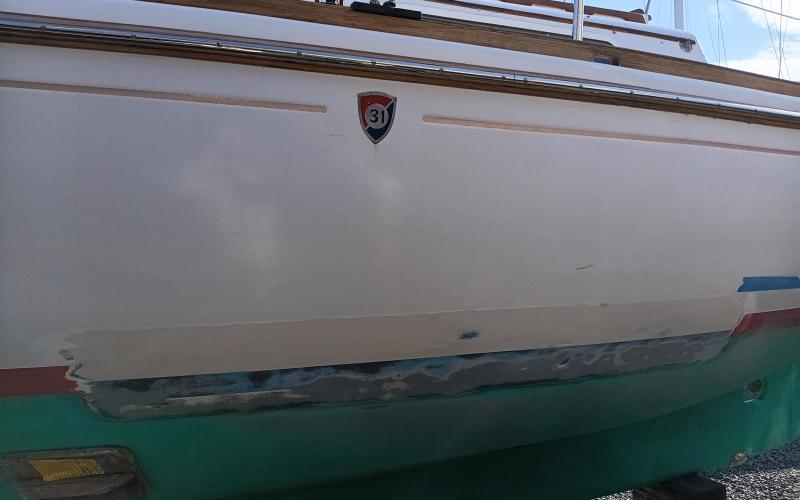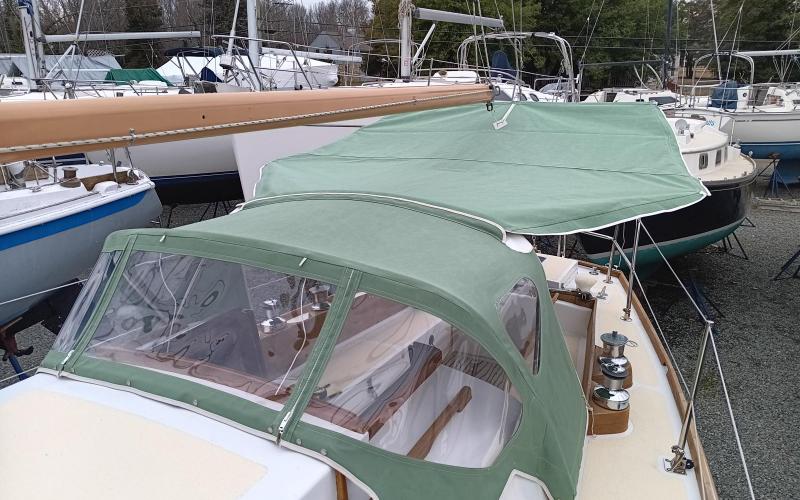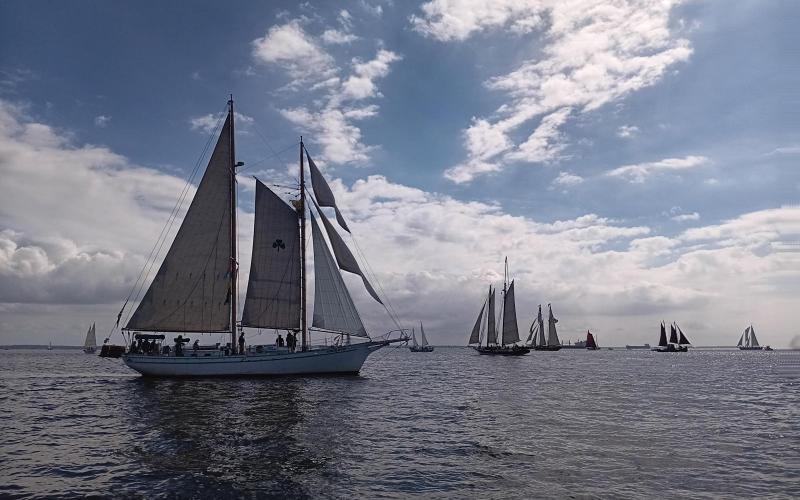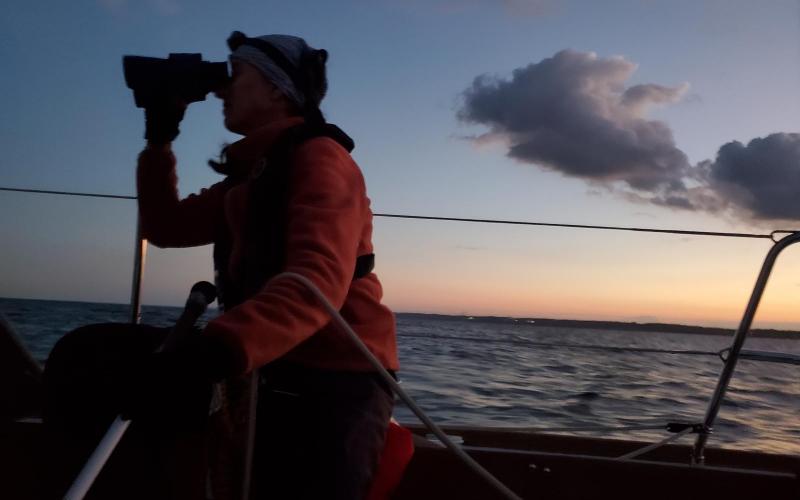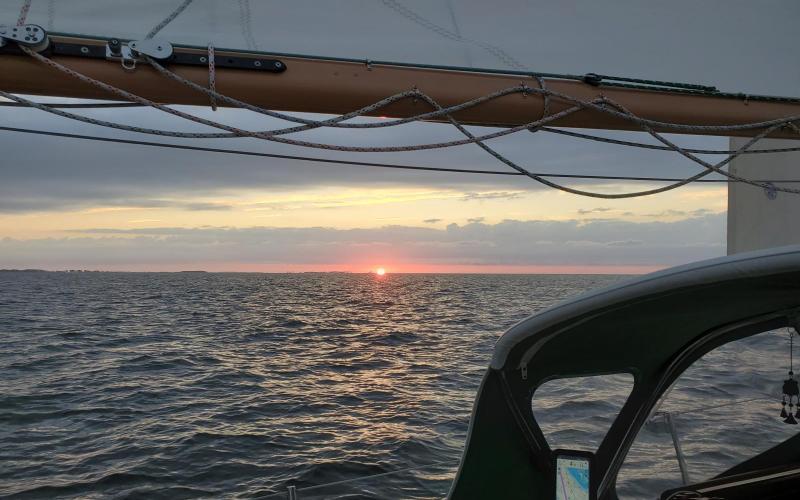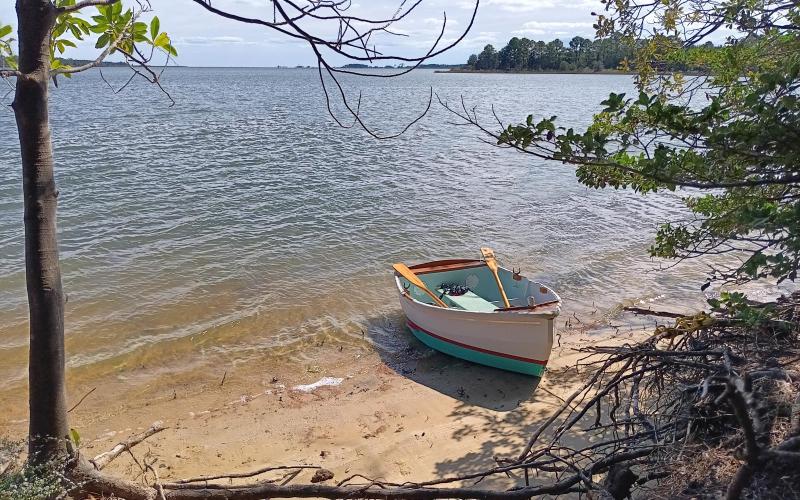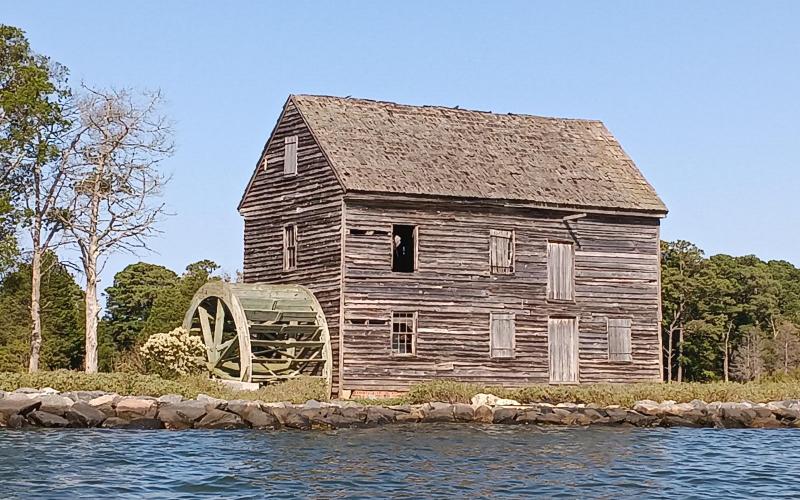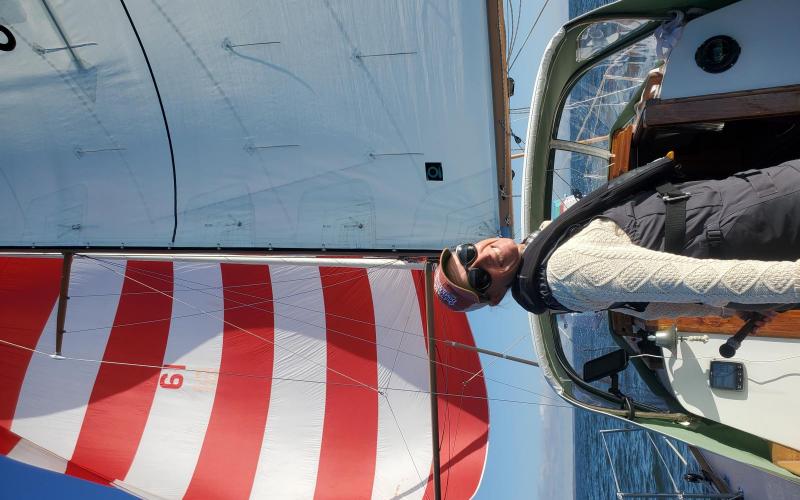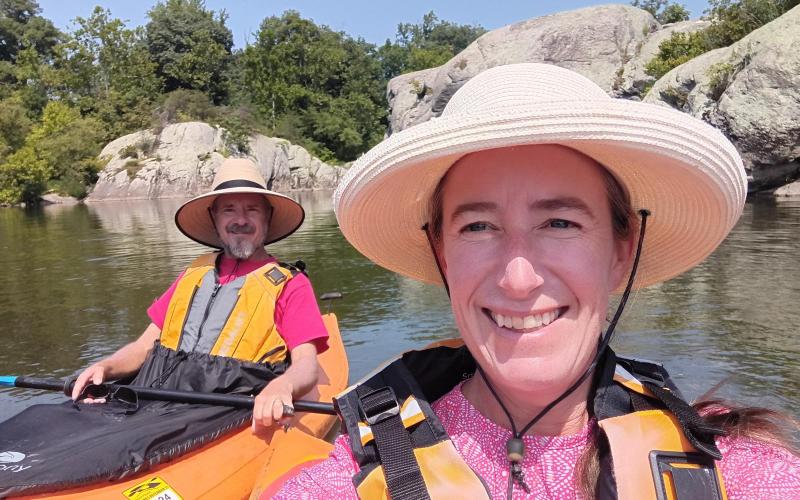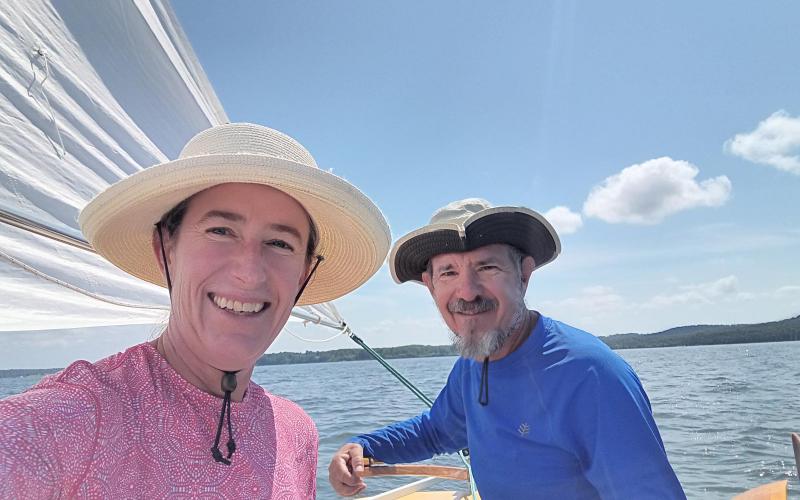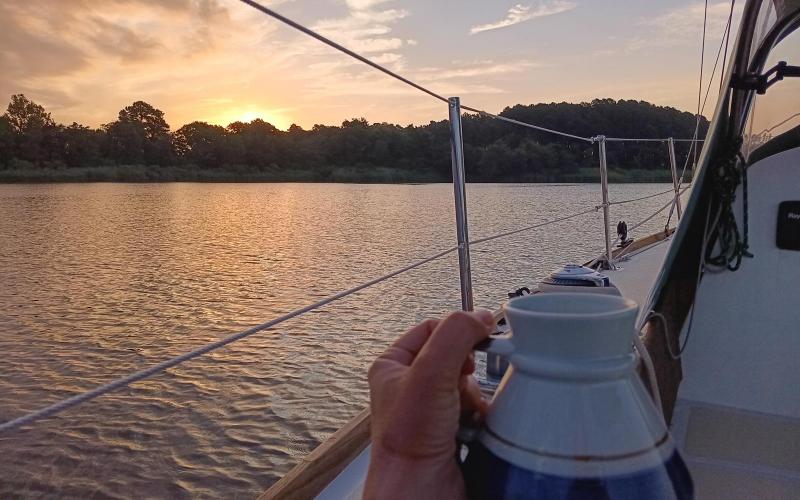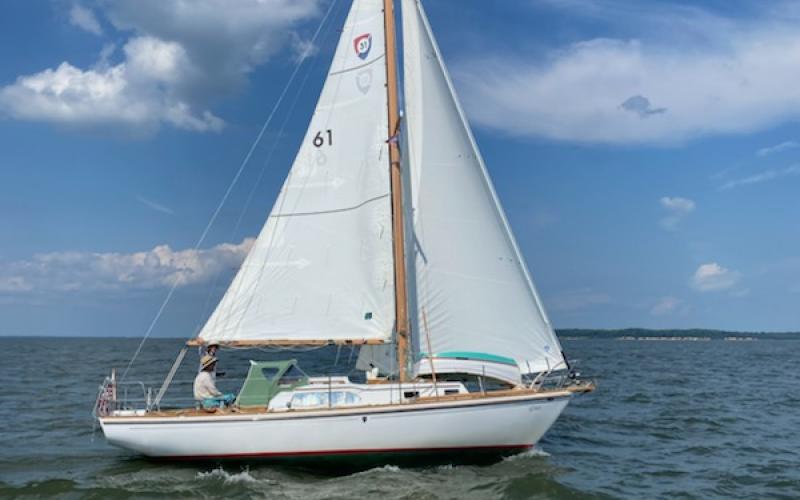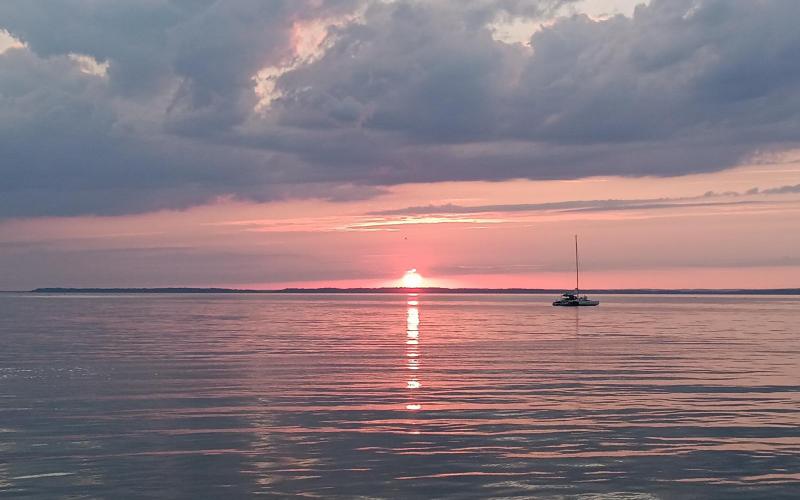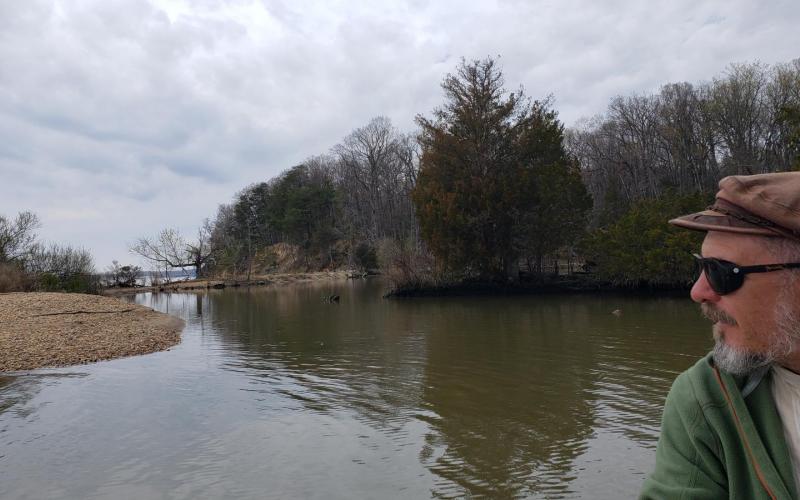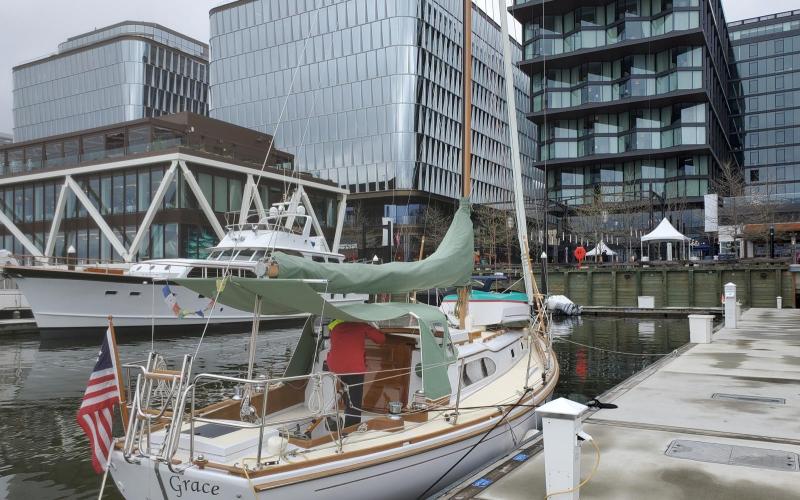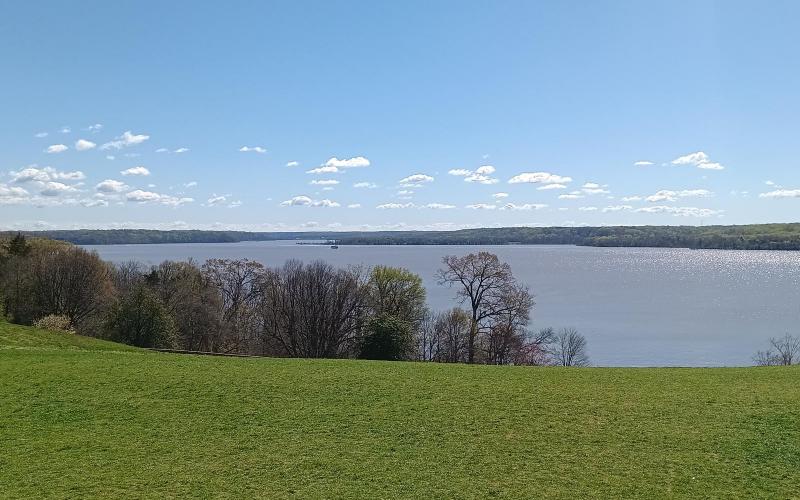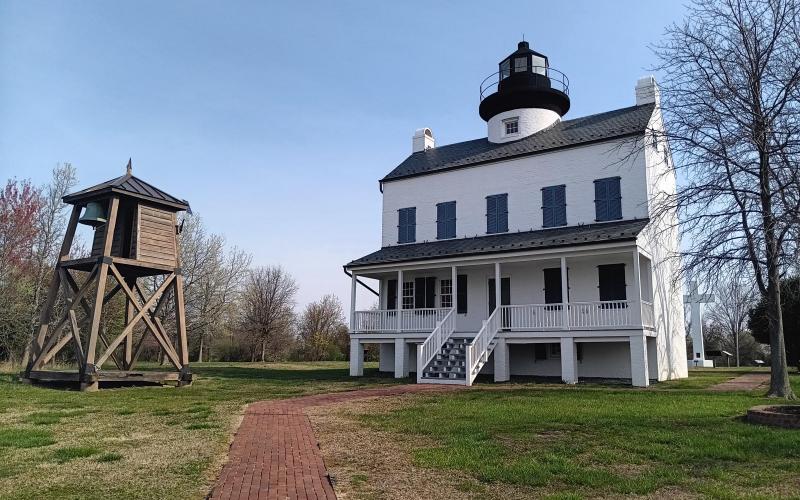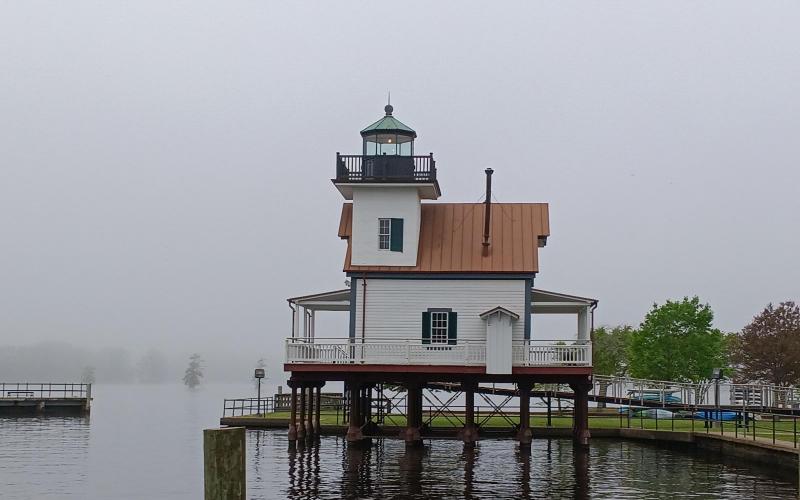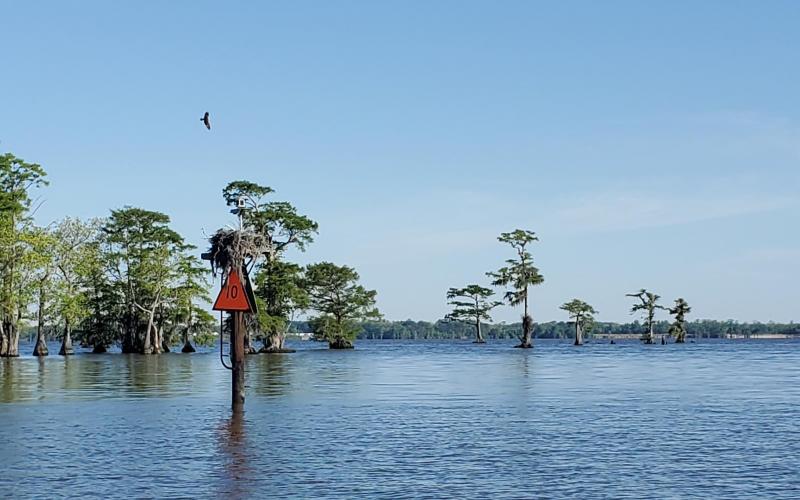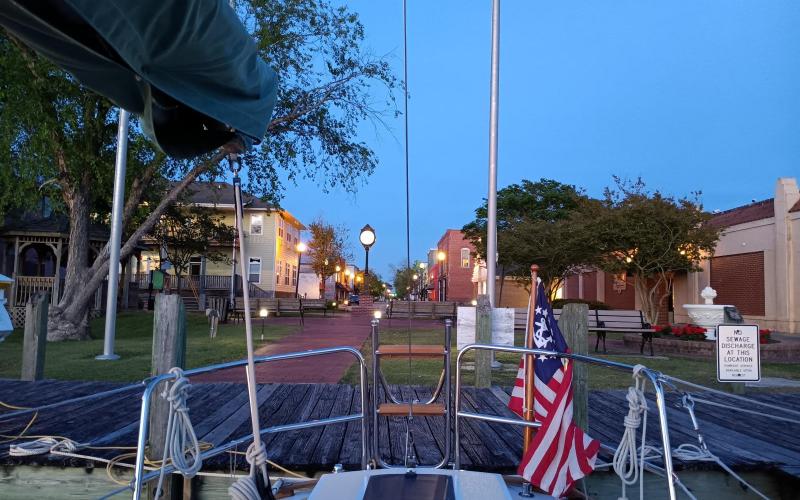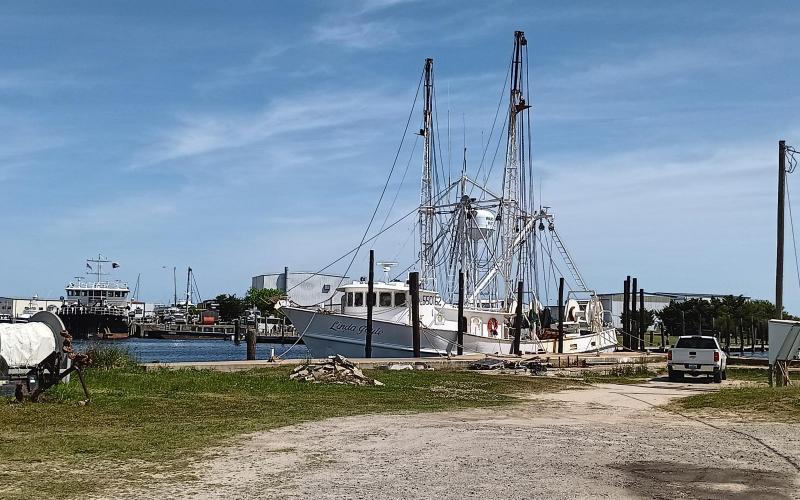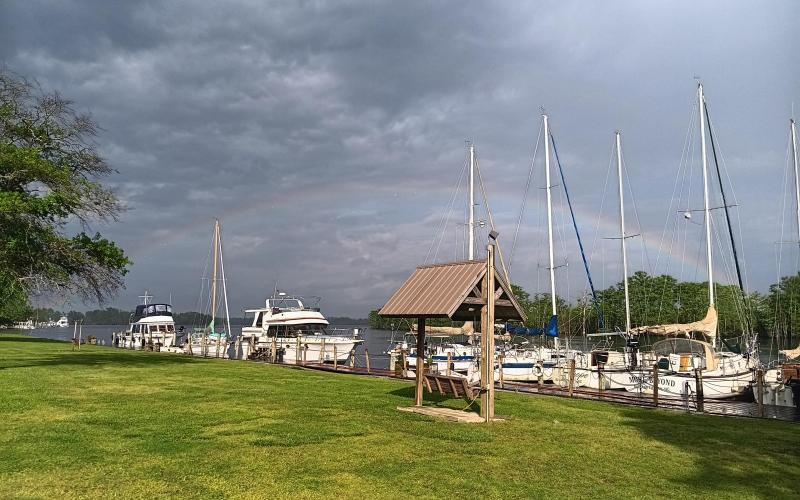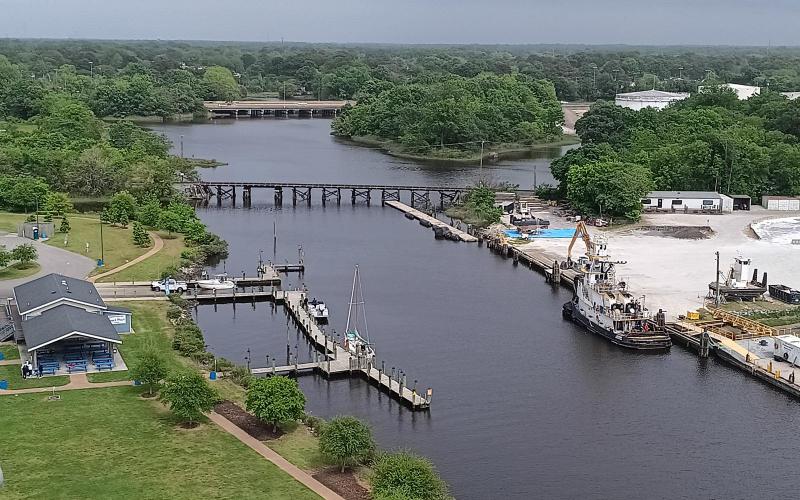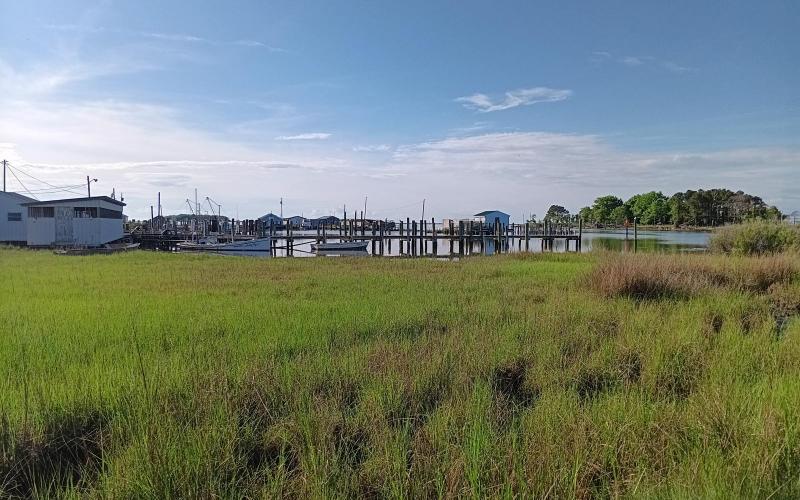It'll take a lot more than 10 days to get GRACE ready for this season, but these first ten were a good start.
Day 5: At 40-degrees, it seemed a little chilly to be sanding, so Dobbs and I worked on the awning and shade curtains instead. To the awning we added a line around the main batten, amidships, to tie it up to the boom; also grommets at the ends of that same batten for ties to secure them down. We made paper mock-ups of the curtains so we could check the fit in place. The rear ones were a go, but the aft side ones needed to be shorter relative to the lifelines and about an inch longer toward the bow. We returned home and made new templates for those.
Day 6: Sand, sand, sand - 2/3rds of the starboard side, forward from the quarter. Dobbs continued on locker modification for the new batteries.
Day 7: I made it all the way around sanding a 1' swath spanning the waterline. It felt REALLY good to throw the last 40-grit disc in the trash. From here on out, it's 80-grit or finer. Dobbs finished prepping the port quarterberth locker and new custom battery box for fiberglass.
Day 8: The Micron SPC anti-fouling I applied last year is in good shape, so I didn't have any additional sanding to do. I wiped the expanded waterline area to be barrier-coated with 202 solvent and then rolled on the first layer of Interprotect 2000e. Then I scraped and sanded the prop and shaft assembly and the rudder shoe. Very satisfying to send the barnacles packing. Also, I had about an hour this morning in which I cut out the starboard aft curtain and started creasing the hems.
Day 9: Sewed beautifully mitered corners and side hems on the first shade curtain only to realize that the concavity we added to help the panels lay flat is working against us. The Sunbrella has so little stretch, especially with a double-rubbed hem, that steaight edges look right and lay better. Good thing I cut only that first one! Dobbs learned more about the Victron charger and how to wire it. In the afternoon, I applied another round of barrier coat to GRACE's waterline and carefully foam-brushed a coat of Primocon onto the prop, shaft assembly, and rudder shoe.
Day 10: Third coat of barrier coat and continued progress on installation of the new battery system.
Another two months should see GRACE shiny as a new penny and the best she's been in 59 years. Look for us on the water mid-May!
